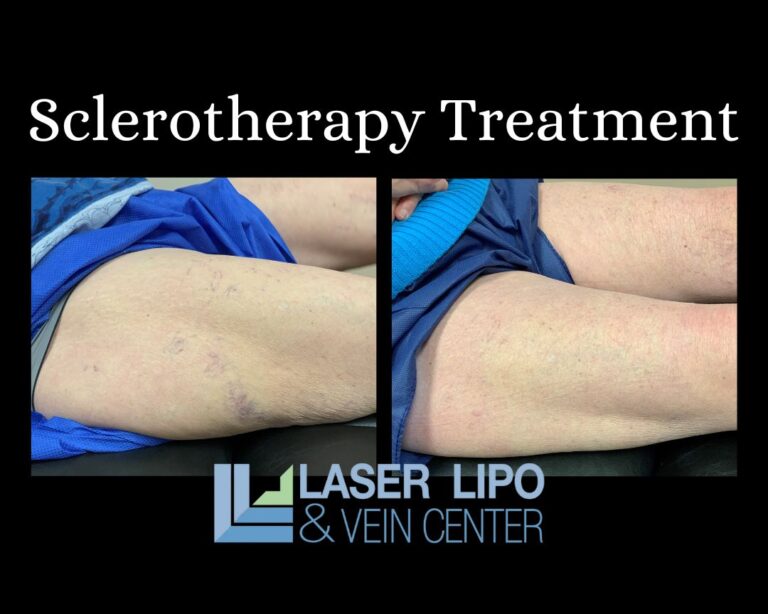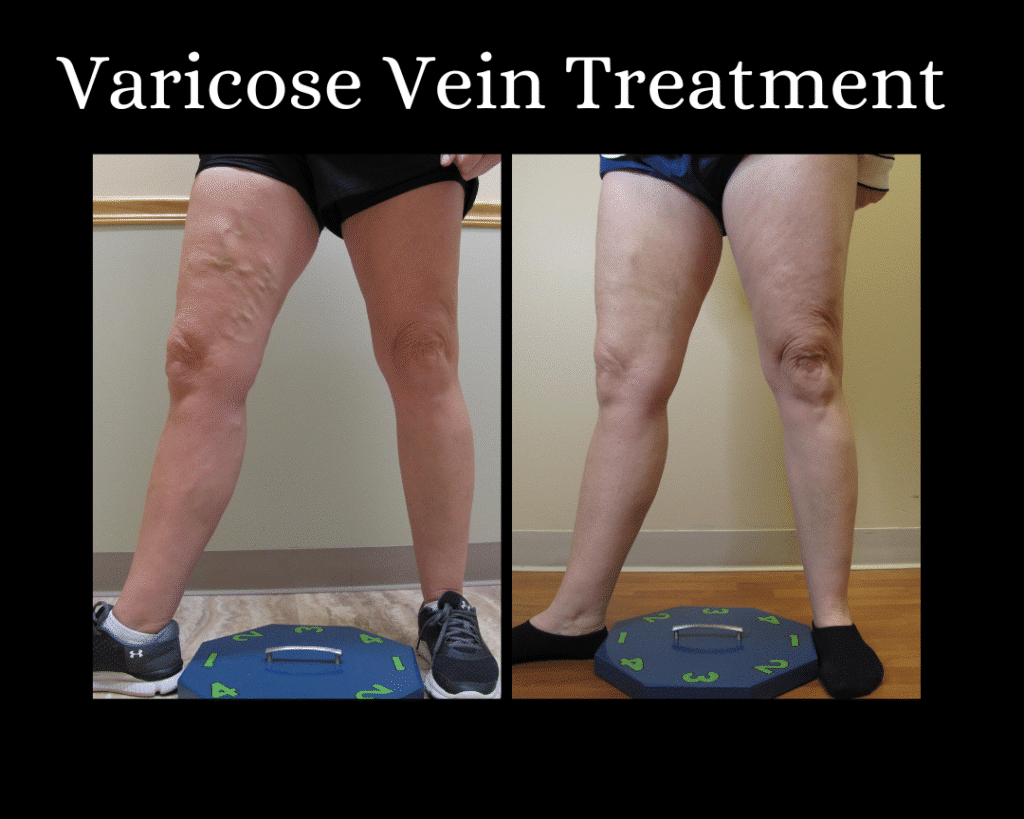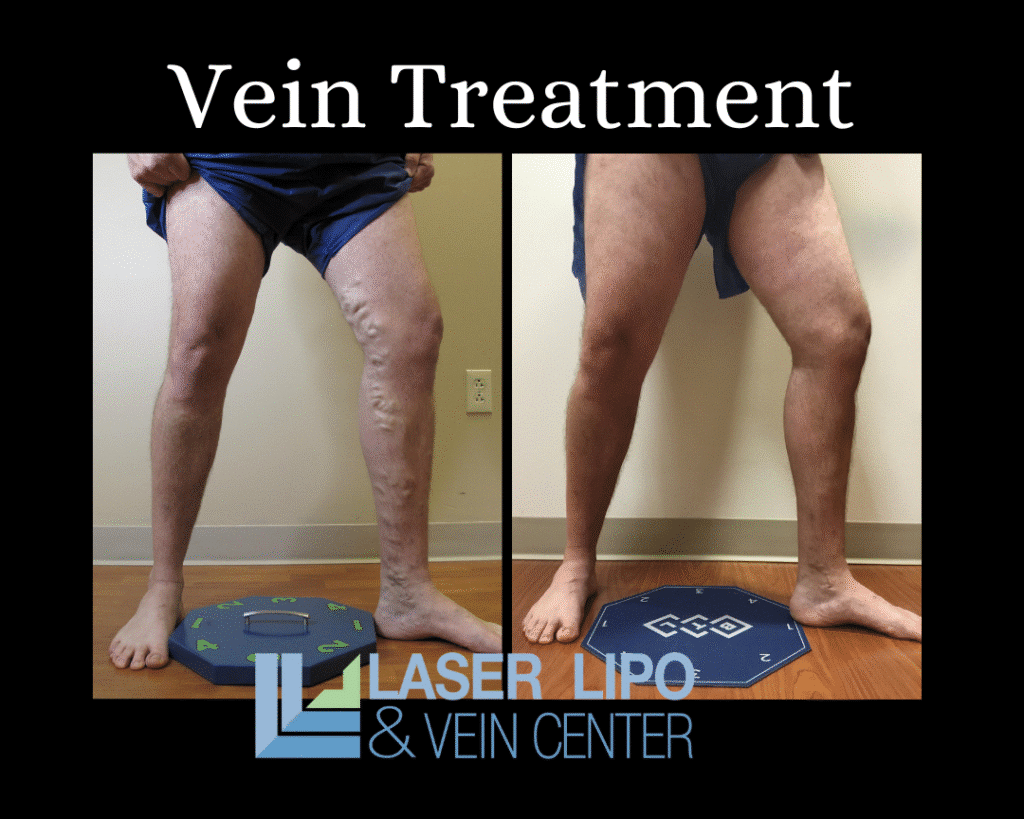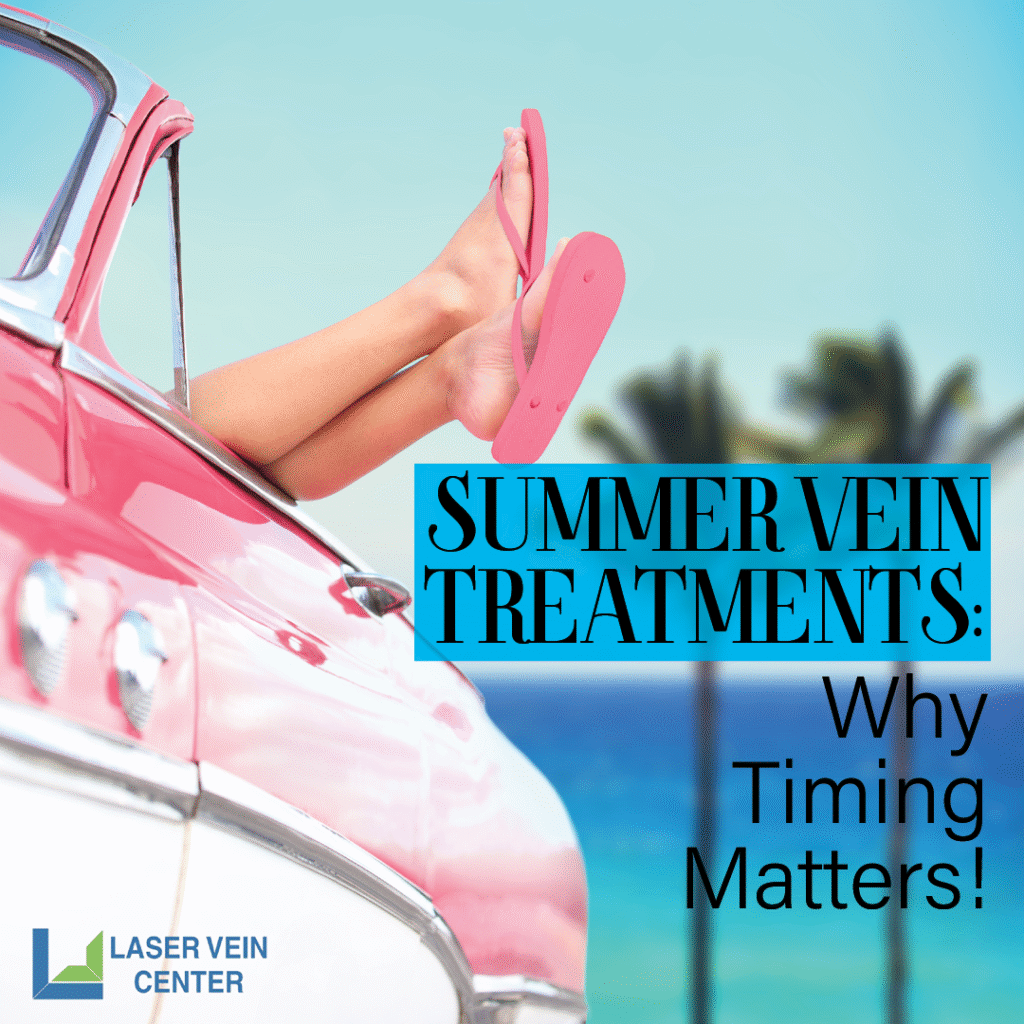When it comes to treating unsightly spider veins and varicose veins, timing can make all the difference in your results and recovery experience. While many people assume summer is the ideal time to address vein issues, the reality is more nuanced. Understanding the optimal timing for vein treatments can help you achieve the best results while minimizing complications and maximizing your comfort throughout the process.
The Summer Paradox: Why Earlier is Often Better
Many patients postpone vein treatments until they’re ready to wear their summer clothing. However, this approach often backfires for several important reasons:
Recovery Time Requirements: Most vein treatments require several weeks to months for optimal healing and results. Starting treatment in late spring or early summer may mean you’re still dealing with post-treatment restrictions and appearance changes during peak summer months. If you have vein problems that could be covered by medical insurance starting early is important because insurers usually require 3 month of medical compression use documented before they will cover the treatments.
Sun Exposure Concerns: Freshly treated areas are particularly sensitive to sun exposure, which can cause hyperpigmentation and impede healing. Summer’s intense UV rays can complicate recovery and potentially compromise your results.
Compression Garment Comfort: Many vein treatments require wearing compression stockings during recovery. These garments can be uncomfortable in hot, humid summer weather, which may affect compliance and outcomes.

Optimal Timing for Different Vein Treatments
Understanding the recovery timeline for various vein treatments helps you plan the perfect timing:
Sclerotherapy for Spider Veins:
- Treatment duration: 15-30 minutes per session
- Recovery time: 2-4 weeks for initial healing
- Compression requirements: 1-2 weeks of compression stockings
- Optimal timing: Late fall through early spring
- Summer readiness: Allow 6-8 weeks before summer activities
Laser Vein Treatment:
- Treatment duration: 30-60 minutes per session
- Recovery time: 1-2 weeks for initial healing
- Sun exposure restrictions: 4-6 weeks minimum
- Optimal timing: Fall through early spring
- Summer readiness: Allow 6-8 weeks before sun exposure
Endovenous Laser Ablation (EVLA):
- Treatment duration: 1-2 hours
- Recovery time: 1-2 weeks for initial healing
- Compression requirements: 1-2 weeks of compression stockings
- Activity restrictions: 2-4 weeks limited exercise
- Optimal timing: Fall through winter
- Summer readiness: Allow 8-12 weeks before summer activities
Radiofrequency Ablation:
- Treatment duration: 1-2 hours
- Recovery time: 1-2 weeks for initial healing
- Compression requirements: 1-2 weeks of compression stockings
- Activity restrictions: 2-4 weeks limited exercise
- Optimal timing: Fall through winter
- Summer readiness: Allow 8-12 weeks before summer activities

The Fall and Winter Advantage
Scheduling vein treatments during cooler months offers numerous benefits:
Comfort During Recovery: Compression stockings and post-treatment garments are much more comfortable in cool weather. You won’t have to deal with the discomfort of tight-fitting compression wear in hot, humid conditions.
Natural Sun Protection: Longer pants and sleeves naturally protect treatment areas from harmful UV rays, reducing the risk of hyperpigmentation and supporting optimal healing.
Reduced Activity Conflicts: Many summer activities like swimming, hiking, and outdoor sports may be restricted during recovery. Fall and winter treatments don’t interfere with peak outdoor activity seasons.
Better Compliance: Patients typically show better compliance with post-treatment care instructions when they’re not eager to show off their legs during summer months.
Planning Your Treatment Timeline
To ensure you’re summer-ready, consider this general timeline:
For Next Summer (Starting Fall/Winter):
- October-November: Ideal time to begin treatment for spider veins
- December-January: Perfect for more extensive treatments like EVLA
- February-March: Last chance for treatments requiring 8+ weeks recovery
- April-May: Final touch-up treatments only
Multiple Treatment Considerations: Many patients require multiple treatment sessions spaced 4-6 weeks apart. Starting early allows time for all necessary sessions while ensuring complete healing before summer.
The Summer Treatment Exception
While fall and winter are generally optimal, some situations may warrant summer treatment:
Symptomatic Relief: If you’re experiencing significant pain, swelling, or discomfort from varicose veins, waiting until fall may not be advisable. Medical necessity should take precedence over cosmetic timing.
Vacation Planning: If you’re planning a winter vacation to a sunny destination, you may need to adjust your treatment timeline accordingly.
Work Schedule Considerations: Some professions make fall and winter treatment scheduling challenging. In these cases, early summer treatment with careful sun protection may be necessary.

Maximizing Summer Treatment Success
If you must schedule vein treatments during summer months, follow these strategies:
Strict Sun Protection:
- Use broad-spectrum SPF 30+ sunscreen daily
- Wear protective clothing over treatment areas
- Avoid peak sun hours (10 AM – 4 PM)
- Consider UV-protective clothing and umbrellas
Compression Garment Management:
- Choose lightweight, breathable compression materials
- Consider graduated compression options
- Plan indoor activities during peak heat
- Stay hydrated to help with comfort
Activity Modifications:
- Avoid prolonged sun exposure
- Limit intense physical activities as recommended
- Choose shaded outdoor activities
- Consider indoor exercise alternatives
The Importance of Professional Guidance
Your vein specialist can provide personalized timing recommendations based on:
Treatment Type: Different procedures have varying recovery requirements and seasonal considerations.
Severity of Condition: More extensive vein problems may require treatments that are better timed for cooler months.
Lifestyle Factors: Your work schedule, vacation plans, and activity preferences all influence optimal timing.
Geographic Location: Patients in year-round sunny climates may need different timing strategies than those in seasonal climates.
Post-Treatment Care Throughout the Seasons
Regardless of when you receive treatment, proper post-care is essential:
Immediate Post-Treatment (1-2 weeks):
- Wear compression garments as directed
- Avoid prolonged sitting or standing
- Take short walks to promote circulation
- Avoid hot baths and saunas
Short-term Recovery (2-6 weeks):
- Gradually increase activity levels
- Maintain sun protection
- Continue compression garment use if recommended
- Attend all follow-up appointments
Long-term Maintenance (6+ weeks):
- Continue sun protection habits
- Maintain healthy lifestyle choices
- Monitor for any concerning changes
- Consider preventive measures
Special Considerations for Different Vein Types
Spider Veins: These superficial veins typically respond well to sclerotherapy or laser treatment. The relatively quick recovery makes them suitable for treatment earlier in the year, but sun protection remains crucial.
Varicose Veins: These larger, deeper veins often require more extensive treatment with longer recovery periods. Fall and winter timing is particularly important for these treatments.
Reticular Veins: These medium-sized veins fall between spider and varicose veins in terms of treatment complexity and recovery requirements.
Making the Right Choice for Your Situation
The best timing for vein treatment depends on your individual circumstances:
Consider Your Priorities:
- Do you want to be summer-ready, or is symptom relief more important?
- Are you comfortable with extended recovery periods?
- How important is it to hide treatment areas during recovery?
Evaluate Your Schedule:
- When do you have the most flexibility for recovery?
- Are there upcoming events or vacations to consider?
- What are your seasonal activity patterns?
Assess Your Motivation:
- Are you more likely to comply with post-treatment care in certain seasons?
- Do you have adequate support during recovery periods?
- Are you prepared for the commitment involved?
The Bottom Line on Timing
While there’s no universally “perfect” time for vein treatments, understanding the advantages and challenges of different seasons can help you make an informed decision. For most patients, beginning treatment in fall or winter provides the best combination of comfort, compliance, and results.
Remember that vein treatments are an investment in your health and appearance. Taking the time to plan your treatment timeline properly can significantly impact your overall satisfaction with the results. The key is working with your vein specialist to develop a treatment plan that aligns with your goals, lifestyle, and seasonal preferences.
Whether you choose to start treatment now or wait for the optimal season, the most important step is taking action. Untreated vein problems typically worsen over time, so don’t let timing concerns prevent you from addressing these issues altogether. Your vein specialist can help you develop a timeline that works for your unique situation and goals.
Start planning your path to healthier, more attractive legs by scheduling a consultation with a qualified vein specialist. Together, you can create a treatment timeline that ensures you’ll be ready to confidently show off your legs when the time is right.

